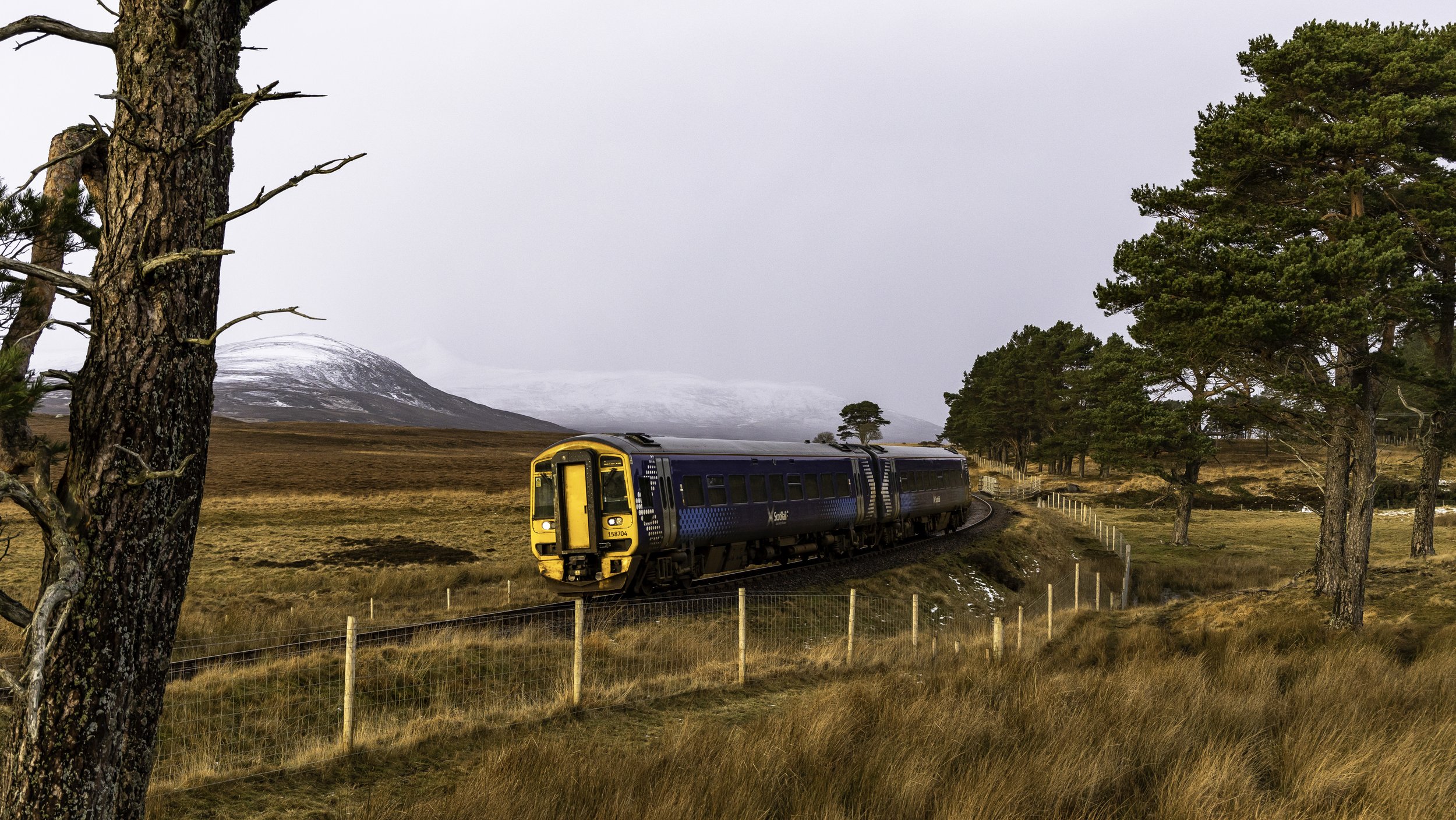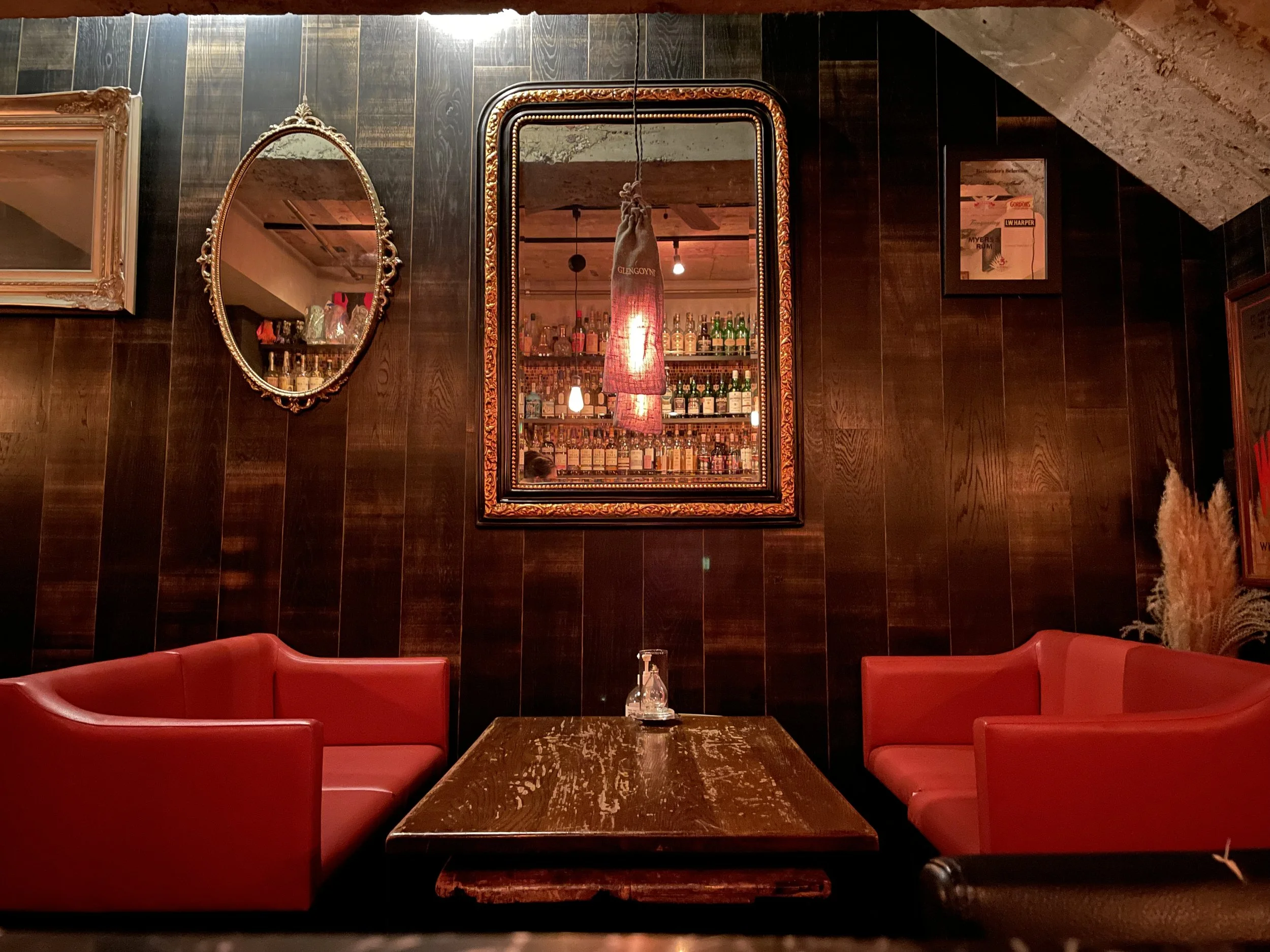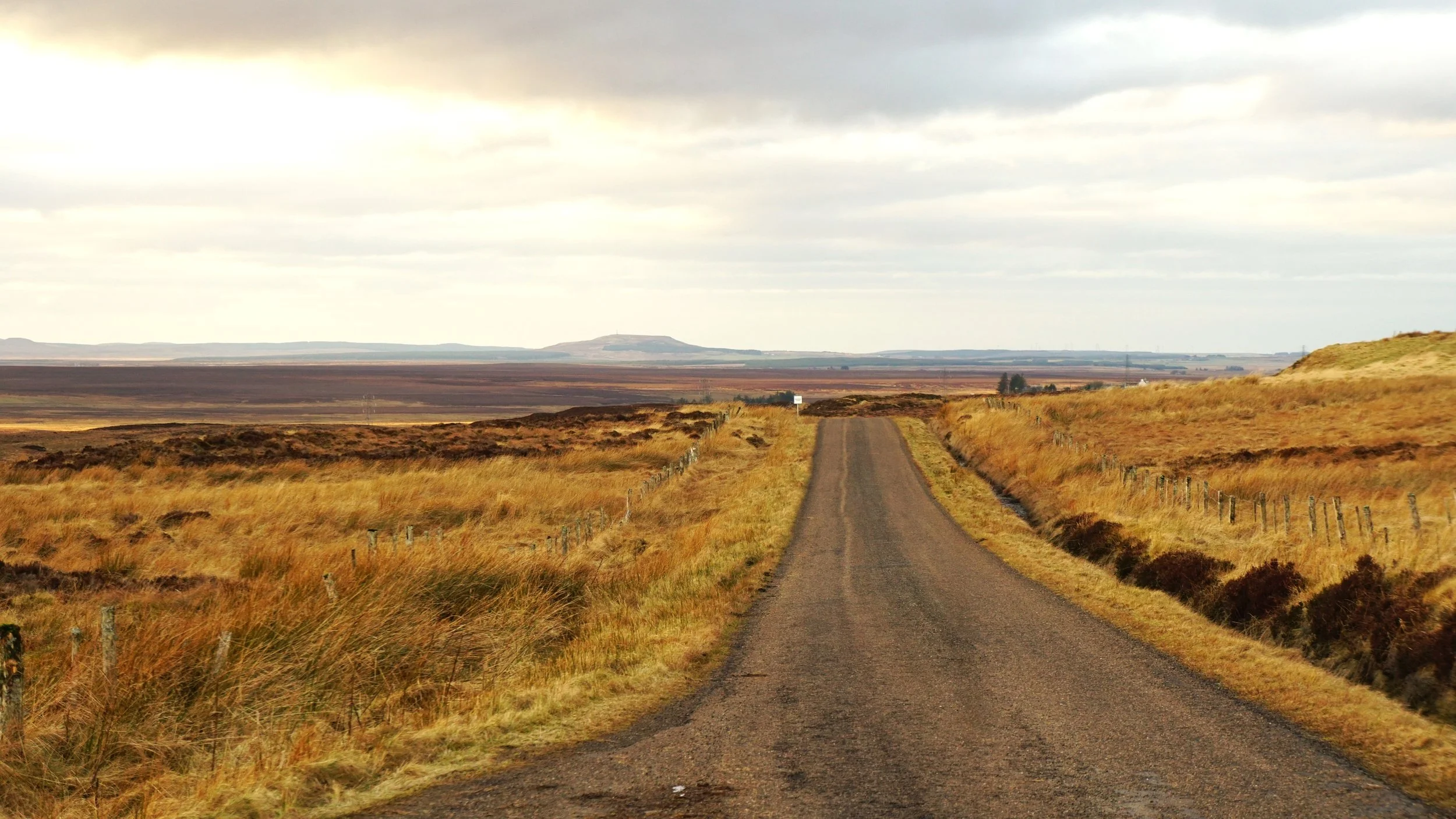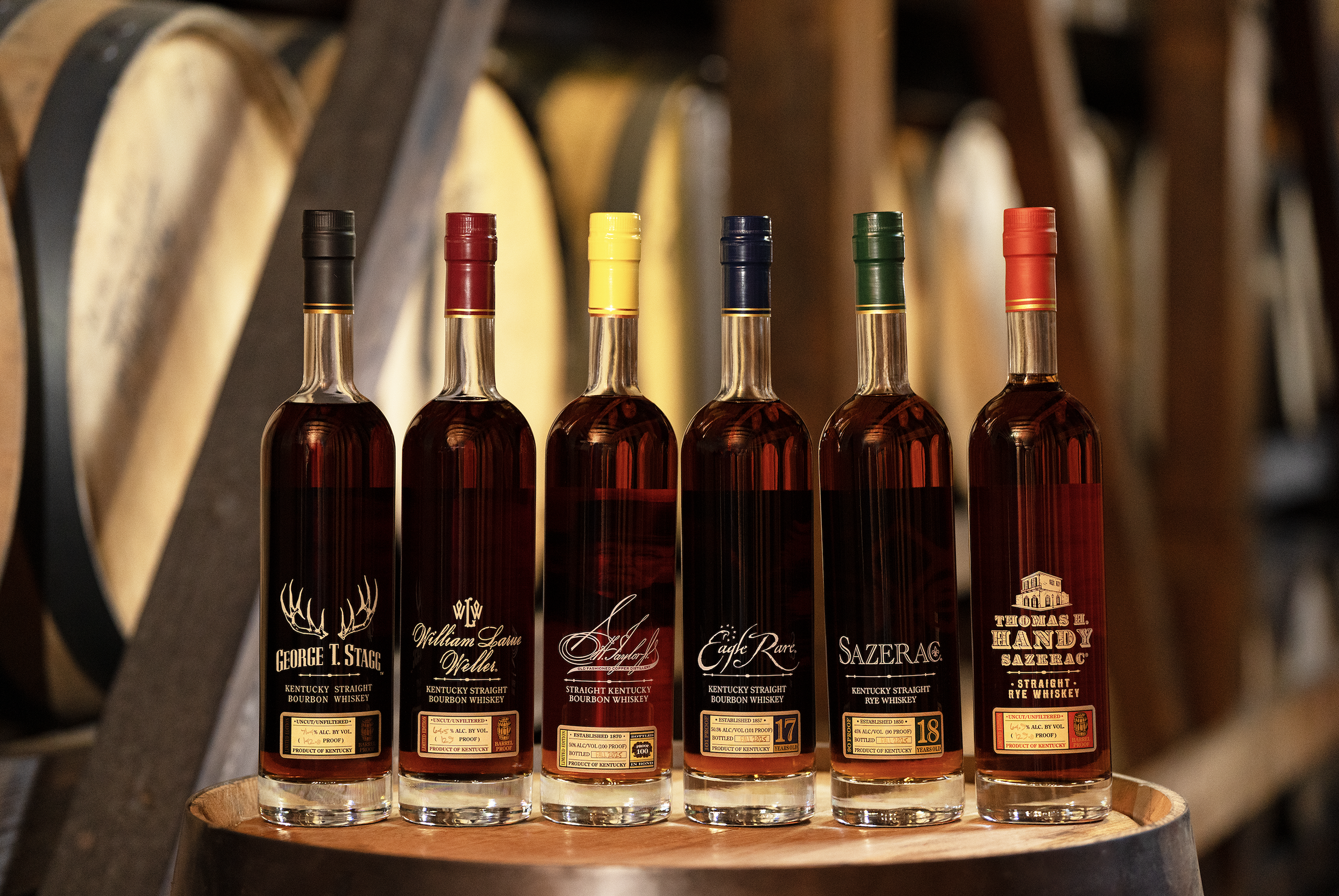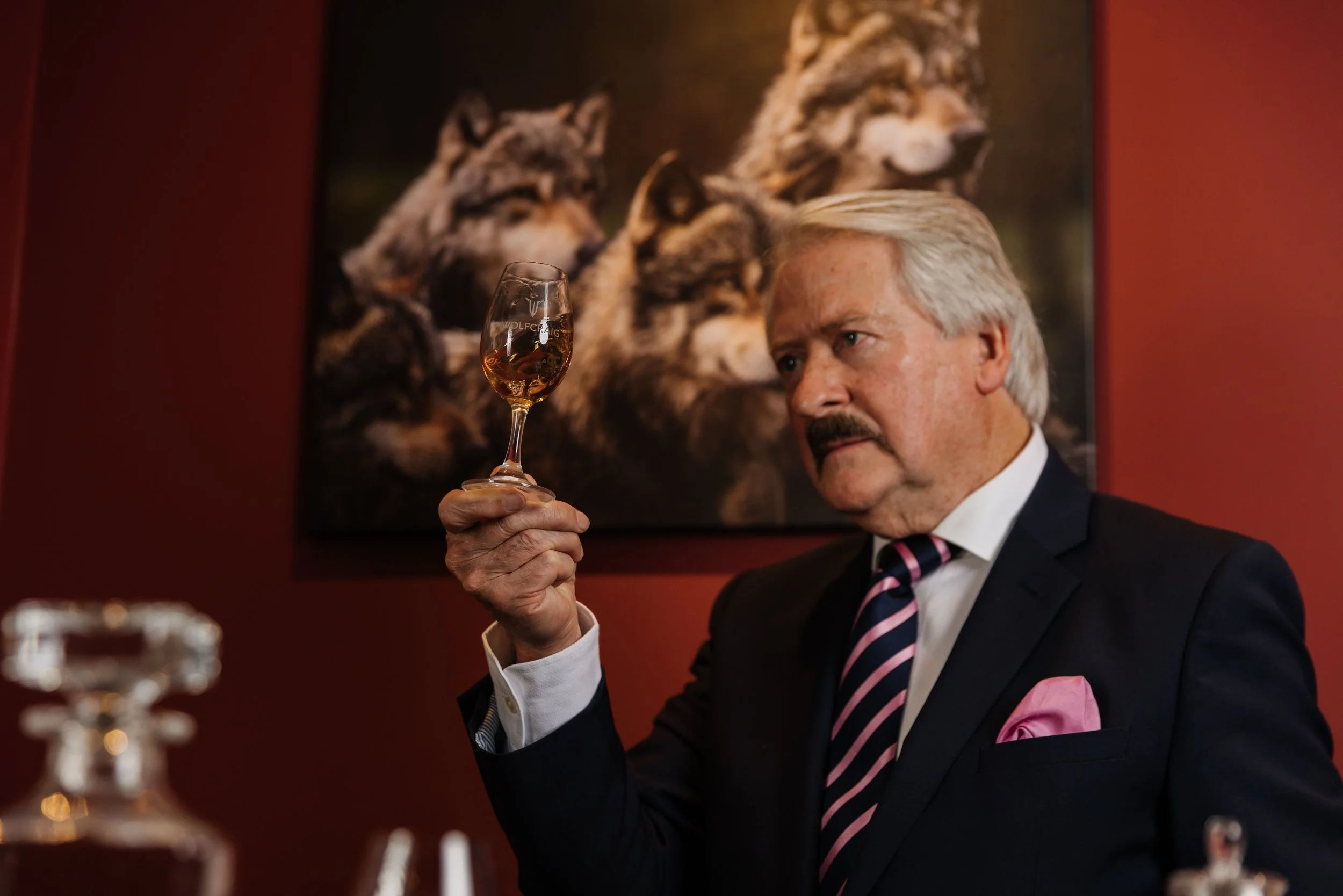Slow train coming
The Far North Line train curving south between Kinbrace and Forsinard. Photograph: Niall Laybourne
New distilleries, smart sleeper trains, the NC500 and a possible UNESCO badge are bringing travellers and tipplers to Scotland’s far north – but it’s the old stories and aged malts that beguile Chris Moss
Why do travellers like to go to the end of the line? Or is it just some of us? I’ve always been unable to resist that next leg of a journey or getting over that border post just beyond the pass. I suspect part of it is a trainspottery, completist streak – not unheard of in middle-aged males. I think it’s also a way of stretching out an experience, resisting the tug to go home and “get on with” ordinary life.
Strange, then, that I had waited so long to take the train to Wick and Thurso. I’ve been riding north and south on our troubled railway network since the mid-1980s and my gaze has often wandered dreamily upwards to the far north. The train to Caithness is not the Trans-Siberian but it’s all we’ve got on our wee isle, and why should Land’s End get most of the attention?
I caught the Caledonian Sleeper and then a bus (the Far North line was closed following a landslide). Both rides were great. The couchettes on the train were smart and the food decent. Then the joy of waking up to summits, burns, stags and snow. Then I was on the North Coast 500, which is bringing serious tourism numbers into the region. Even from a bus I could see why; pretty towns, wide coasts, wilderness. Do the NC loopers, on their bikes and in their campervans, not want to just keep circling for ever?
Wick is a dark and mysterious place. The houses are of dark-grey stone and harling. The February weather is made of mist and mizzle. Overcast skies turned the river to ink. A walk along the front took me through an abandoned quarry squatted by fulmars, past a sign telling me Bergen was closer than London. Beyond the headland was The Trinkie; the name sounds effete but it’s a huge slab of rock that is, apparently, a lido. Wick is from “Vik”; I could imagine hairy Vikings cooling off in the chilly froth after a voyage or a rampage. At the end of the cliff-top road was a ruinous castle also occupied by seabirds. The North Sea roiled gently around the base and mist drifted in or over. There was no wind, just a grey stillness.
‘Wick is from “Vik”; I could imagine hairy Vikings cooling off in the chilly froth after a voyage or a rampage’
Downtown Wick was obviously in decline, its high street half-vacated as in every town in the country. A few old, stately-looking buildings memorialised a grandeur long gone. Wick’s heritage museum, on the right bank of the river, sprawls across a terrace of harbourside terraces; it is here you get the lowdown on the fall from glory.
Donald, the volunteer curator explained how this was Europe’s biggest herring port, with a harbour built by Thomas Telford. The district on the right bank, Pultneytown, is the world’s oldest model industrial estate. More than 1,000 vessels were based in Wick in the mid-19th century, and the population of the town quadrupled during the fishing season. Some forty-odd licensed premises served a cosmopolitan clientele, with 800 gallons of whisky consumed every week.
Wick, with its harbour built by Thomas Telford
Things came to a head when the fighting and whoring got too much for the town’s burghers, and for the fishermen’s wives – fed up of empty wage packets. Temperance-minded grandees arranged a referendum and enfranchised the townswomen. Following speeches, public meetings and newspaper columns penned by both “wets” and “drys”, polling day arrived. Sixty-two per cent voted No Licence. Many men were too drunk to vote as drinks were discounted on that special day. Only bona fide travellers could henceforth legally purchase alcohol in Wick, and only as an accompaniment to a meal. Oftentimes I have tried to adopt this principle; unlike Wick, I failed after just a few nights.
Prohibition was in force from 1922 to 1947, 12 years longer than in the US. Illicit alcohol was produced in at least two clandestine stills. Underground drinking dens, or shebeens, sprang up around the town, including one located in a respectable restaurant, where a silver teapot was used to dispense whisky to in-the-know customers.
‘Prohibition was in force from 1922 to 1947, 12 years longer than in the US. Illicit alcohol was produced in at least two clandestine stills’
In the midst of all this stood the distillery of Old Pulteney, established by James Henderson in 1826 during the distilling boom that followed the passing of the Excise Act. This would have been one of the major local suppliers of working men’s grog. Wick people speak fondly, and proudly, of the era of “barrels of silver and barrels of gold”: salted herrings and single malts.
A proper town distillery, Old Pulteney made use of the port for timber and coal. The soft water came – and still comes – from Loch Hempriggs, along a mill lade built in 1807 by Telford. I was taken on a tour to see the impressive plumbing, and the centenarian Porteus mill, mash tuns and six washbacks. The wash still was adapted to fit the original dimensions and features an uncommonly large boiling ball (the bottle is inspired by the shape).
Brooding Duncansby Head, the furthest point from Land’s End
Most of the site is taken up by warehouses, which are damp and gloomy and quite wonderful. Old photographs show coopers and maltsters from the early 20th century, several of the men with monkey shoulders from leaning over as they mixed the malt by hand. Afterwards I sampled the 12 and 15 year old expressions and bought myself a bottle of the Huddart – a lovely, easy-to-drink whisky with a hint of peat and a whiff of smoke. Afterwards on Huddart Street, which inspired the label, I tasted the black buildings, so to speak. Wick’s general blackness was deeper around the cathedral of Old Pulteney, due to the giveaway layer of Baudoinia compniacensis, whiskey fungus, dripping like devil’s blood.
And so to Thurso, another lovely town, with a golden beach as well as cliffs, and plenty of boozers and bakeries, and a fine museum. On the way there, I had a moment. Under a waning sun, the tough grasses on the unfarmed plains looked golden. I was crossing the far edge of Caithness’s Flow Country – the 1,500 square mile wilderness of glistening pools, rivulets and spongy peatland that comprises the largest blanket bog on earth. Formed over 10,000 years, the peat can be ten metres deep. In the 1970s and 80s, Government tax breaks promoted forestry. Swathes of ancient bogland that had been treeless since Thor landed were drained, gouged with deep furrows, and planted with fast-growing conifers. The Flow Country became a battleground between pro-plantation developers and conservationists concerned at the destruction of such a rare, undisturbed habitat.
‘I was crossing the far edge of Caithness’s Flow Country – formed over 10,000 years, the 1,500 square mile wilderness of glistening pools, rivulets and spongy peatland that comprises the largest blanket bog on earth’
The area is now in recovery, which is good news for the planet – peat is a superb carbon store – and for the local fauna. Golden eagles, merlin and short-eared owls hunt on the mosses and pools. Divers, plover and greenshank browse in the wetlands. Micro-habitats support insects, spiders, amphibians, reptiles and small mammals like shrews. In February 2023, a bid was submitted to Unesco to recognise this magical region as a world heritage site; a decision is expected later this year.
Road to nowhere: Flow Country, Achavanich area. Photography by David Scott (DGS)
But my moment was a crack in time. What I saw reminded me of the Patagonian steppe. When I first travelled around southern South America thirty years ago I would instinctively look out for analogues of my Lancashire home. These days I find myself spotting little Patagonias in the UK. This northern extreme is the closest, to date.
In Thurso, I met local man Martin Murray, who has made a spirited splash in these parts with his Dunnet Bay gin factory. We dined and tasted a few – his botanicals, many linked to the Caithness landscape, are superb – and then he drove me to show me his next big project: rebuilding an old grain mill at Castletown to make whisky. It looks like a great project, combining tourism, gastronomy, heritage and drink. Look out for Stannergill single malts some time around the end of the decade.
Since John O’Groats is neither the northernmost point (Dunnet Head) nor the furthest from Land’s End (Duncansby Head), I did the short walk to the latter; the completist in me needed his fix. This took me across boggy, and wavy, grassland that explained the name of the Flow Country. Overlooking the carpark at John O’Groats is the 8 Doors Distillery, where, in 2022, Kerry and Derek Campbell started to make whisky – the first time at this location in 180 years.
The name comes from the octagonal house built by Jan de Groot, who allegedly ran a ferry to Orkney in the mid-1400s. But 8 Doors is no wind-blasted hovel. It’s a swanky, big-windowed eating and drinking establishment with two bespoke handcrafted stills made by the Speyside Copper Works team. The couple are already selling a smooth signature blend under the Seven Sons label as well as a lovely 9-year peated single malt using raw material from Glenturret Distillery. They could have their very own whiskies from 2026, though nothing will be hurried to sale. They called their founders’ organisation the 874 Club after the distance from their locale to Land’s End. Both their memberships have already sold out.
Wolfburn’s Langskip: an award-winning and seriously satisfying sip
Along with the Wolfburn and North Point Distilleries, which opened in 2013 and 2020 close to Thurso, these two new ventures will transform the highest corner of the Highlands into a whisky hotspot. But, says Wolfburn co-founder Harry Tayler, this is only as it should be. “In its day Wolfburn was the biggest whisky-maker in the north. Much of the history is lost in the mists of time but it’s a fair bet that it was illegal when it was first built; there was a huge reduction in duty in 1826, and most distilleries operating before this time – especially in the Highlands – did so illegally. The first tax records, from 1826 – again pointing to it being illegal before this date – show it producing ‘28,000 gallons of proof spirit’, which was a huge operation in those days.”
King of the cask rollers Iain Kerr at Wolfburn distillery
Quality, not quantity, drives the re-booted Wolfburn. The distillery’s first release, Northland, in 2016, won gold medals in five consecutive international competitions, including the World Whisky Awards. Shortly before the pandemic, Langskip won not just Best Whisky but also Best Overall Spirit at the Asia Spirits Show in Singapore. Most recently, Morven scooped a gold medal with a whopping score of 95 in the latest edition of Jim Murray’s Whisky Bible – just a couple of points away from the best whisky on the planet. I tried all three and they really are touching the heights.
Of the 21st century renaissance, Tayler says, “I think it’s great that the little guys are giving the big corporates a run for their money. Locally it’s great too – the more whisky attractions there are in one area, the more tourists and visitors we will garner. What is special about the north-east corner, though, is the people. The coastline is rugged and beautiful, but asides from this the scenery is not stereotypical ‘picture-book Scotland’ in the way that many people might imagine. It’s the people that set the place apart. Caithness folks are incredibly hard working and hugely hospitable and welcoming. And they make excellent whisky!”
‘If Orkney didn’t exist, Wick and Thurso, and the wilds between, would be swamped by tourists’
I cannot disagree. Everyone I met was friendly and good company and full of culture and enterprise. Every meal was a blinder. Every drink was over too quickly. Why had I waited to so long to take the Far North line? I blame the south. I blame London. And work. And following the crowd. Another Thurso local, Ken McElroy, made the point – laughing as he did so – that if Orkney didn’t exist, Wick and Thurso, and the wilds between, would be swamped by tourists. So true – people all too often don’t know a good thing when they see it. For once, I actually didn’t want to keep travelling to see the next thing. I had been sated and revived.
Spectacular views across Dunnet Head peninsula
The Far North line had reopened for my trip home. Now I saw the Flow Country in all its strange and unconquerable majesty. Sure, there are hills, and I can see high mountains in the distance. There are trees: the invaders not yet felled. There are even villages and houses by the request-stop stations. The train at least makes more stops than the Trans-Siberian on its meandering journey. But the overall impression is of shifting, soaking, rain-formed, time-sown, gaze-drowning vastness. A landscape made not for humanity nor exploitation. Only the birds, after all, can truly see the place and its shapes and contours. The Flow Country resists everything. Wick people told me many peasants from Caithness emigrated to Patagonia to raise sheep. It makes perfect sense. Travel half-way round the world to find a place you recognise, and where no one else wants to be. Ends of lines. Homecomings. Hard to tell the difference sometimes.
Chris Moss is a travel writer and regular contributor to Barley
Into the wilderness: Flow Country near Westerdale, Caithness. Photography by David Scott (DGS)

